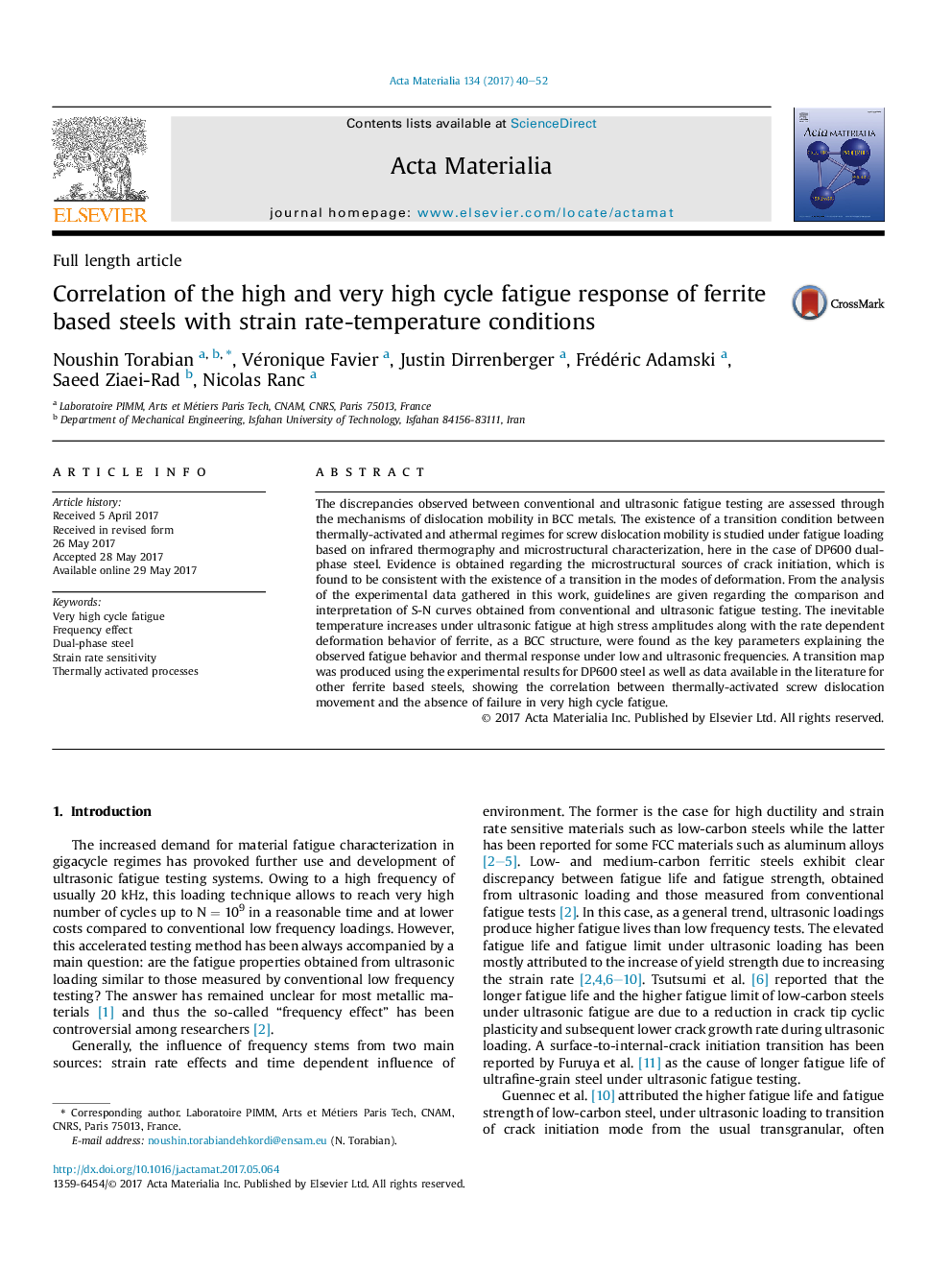| Article ID | Journal | Published Year | Pages | File Type |
|---|---|---|---|---|
| 5435962 | Acta Materialia | 2017 | 13 Pages |
The discrepancies observed between conventional and ultrasonic fatigue testing are assessed through the mechanisms of dislocation mobility in BCC metals. The existence of a transition condition between thermally-activated and athermal regimes for screw dislocation mobility is studied under fatigue loading based on infrared thermography and microstructural characterization, here in the case of DP600 dual-phase steel. Evidence is obtained regarding the microstructural sources of crack initiation, which is found to be consistent with the existence of a transition in the modes of deformation. From the analysis of the experimental data gathered in this work, guidelines are given regarding the comparison and interpretation of S-N curves obtained from conventional and ultrasonic fatigue testing. The inevitable temperature increases under ultrasonic fatigue at high stress amplitudes along with the rate dependent deformation behavior of ferrite, as a BCC structure, were found as the key parameters explaining the observed fatigue behavior and thermal response under low and ultrasonic frequencies. A transition map was produced using the experimental results for DP600 steel as well as data available in the literature for other ferrite based steels, showing the correlation between thermally-activated screw dislocation movement and the absence of failure in very high cycle fatigue.
Graphical abstractDownload high-res image (508KB)Download full-size image
